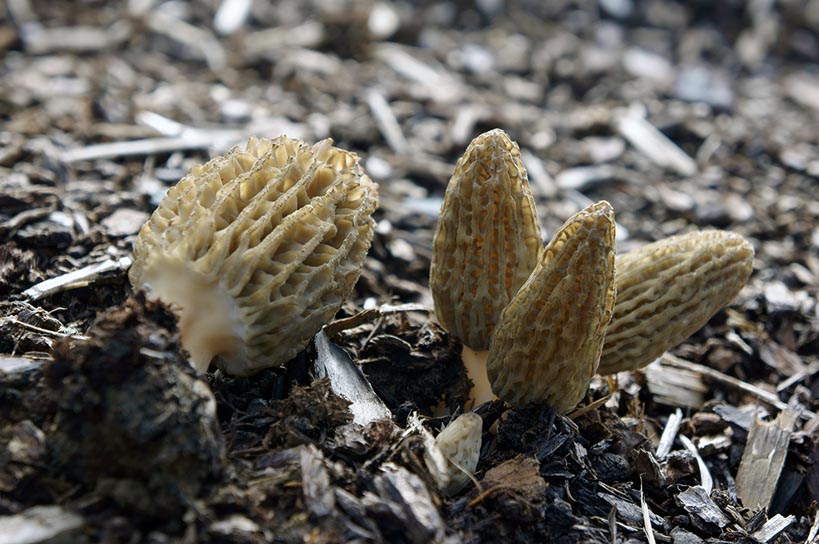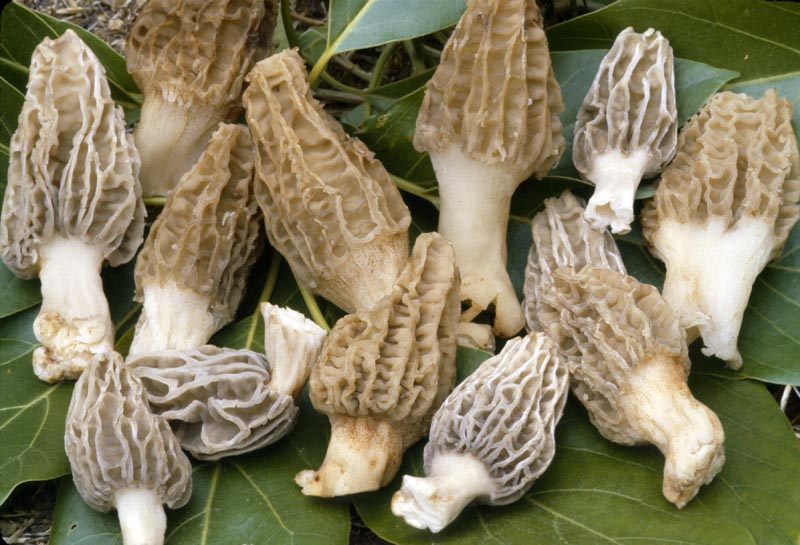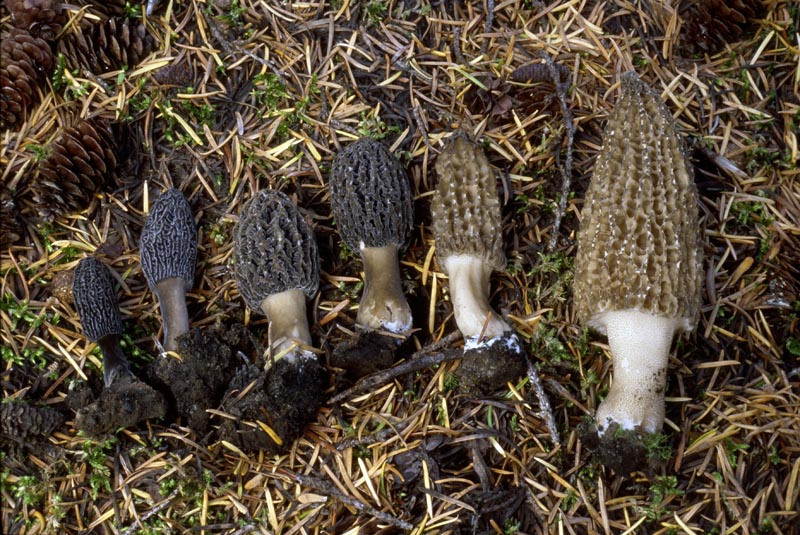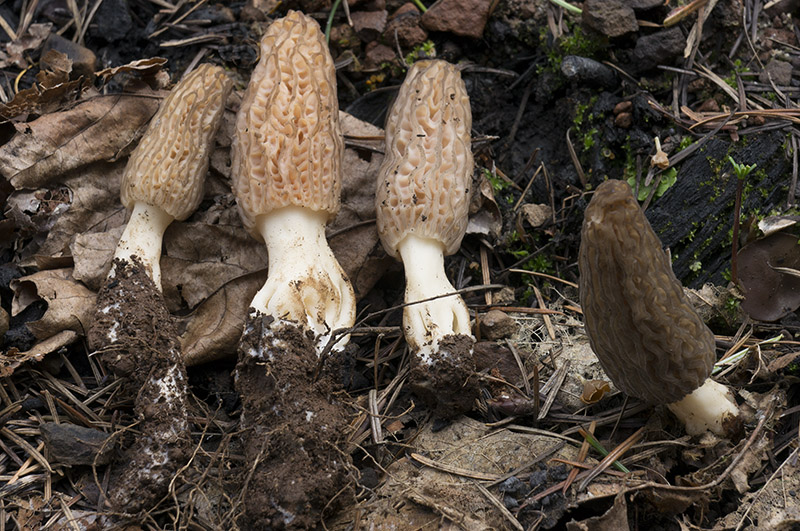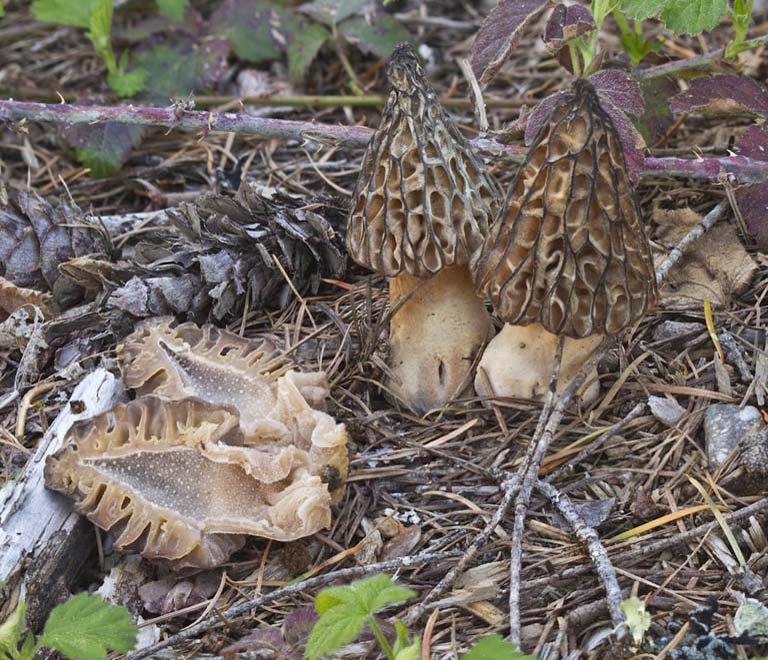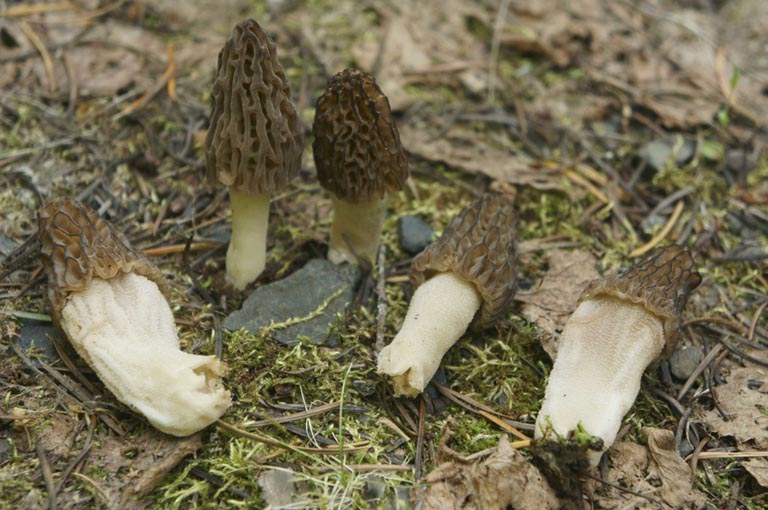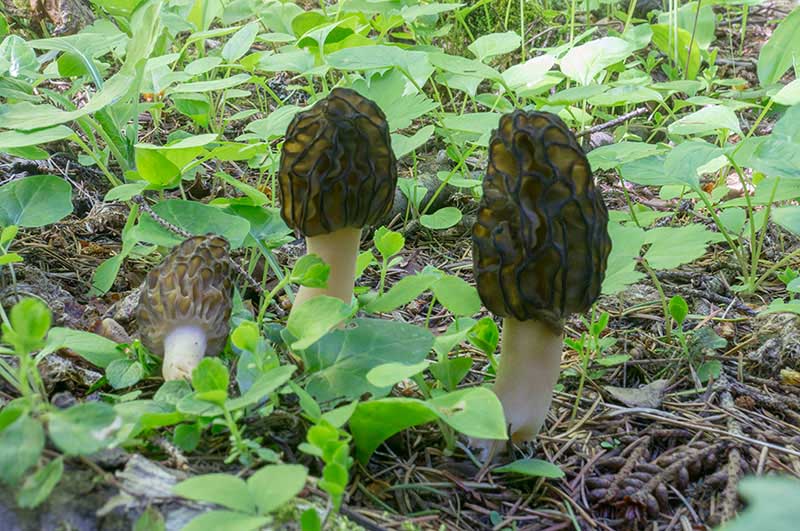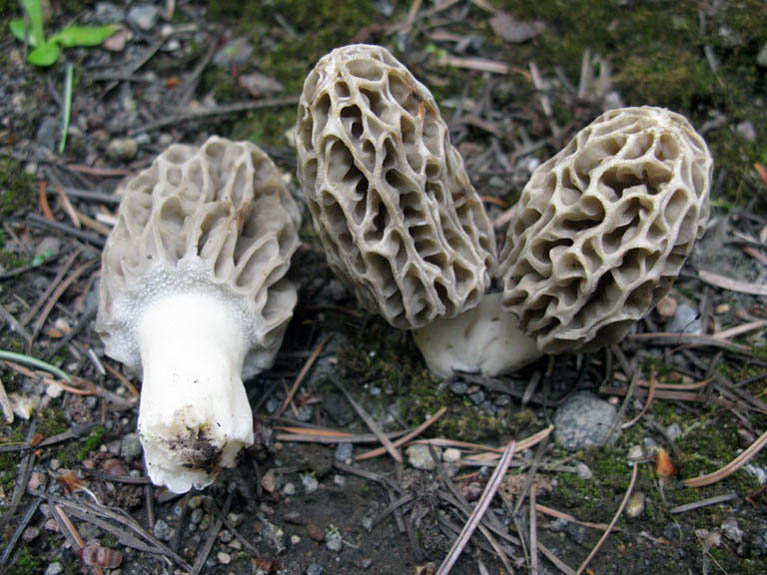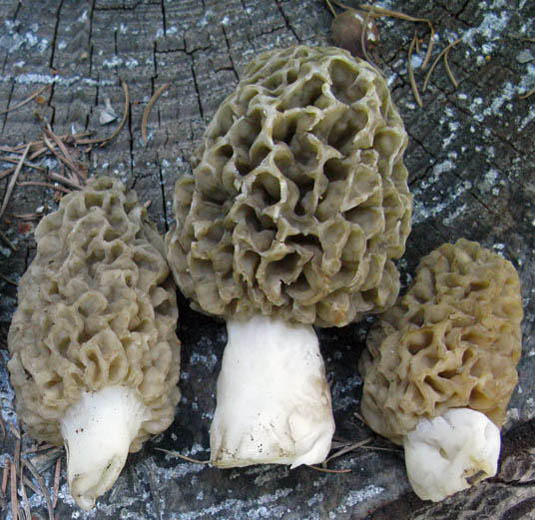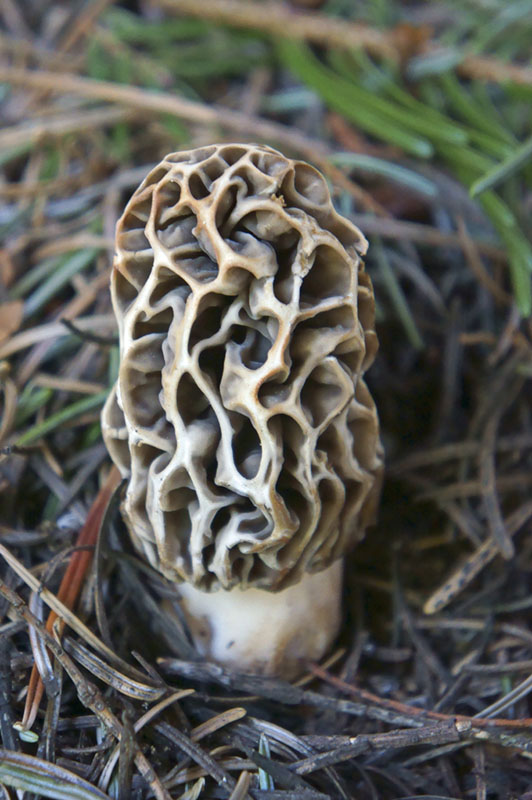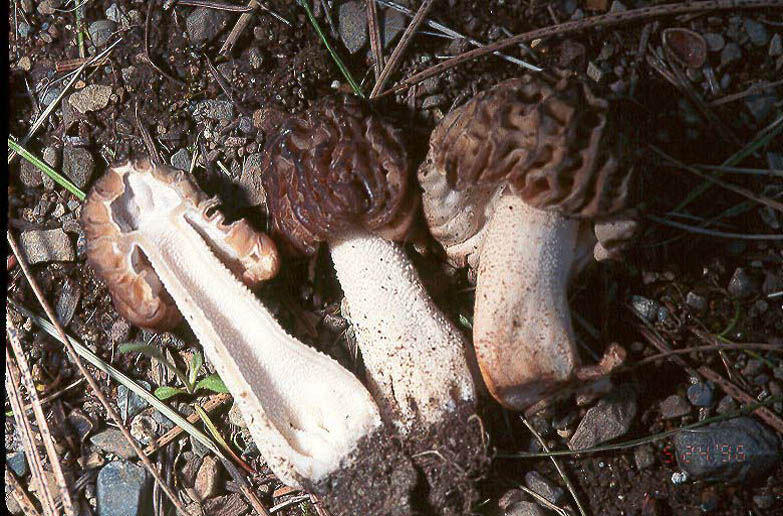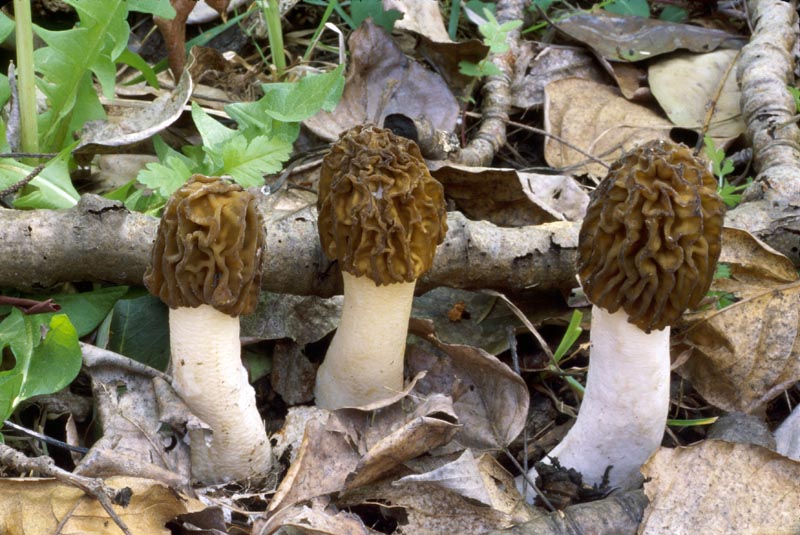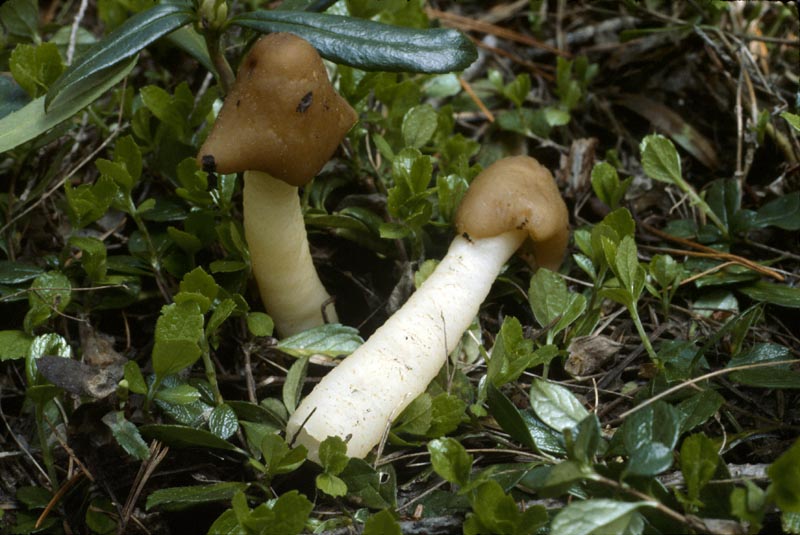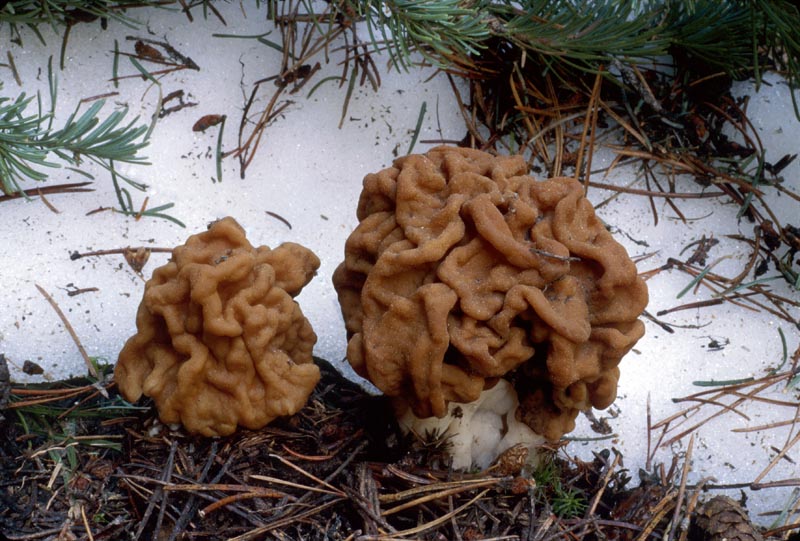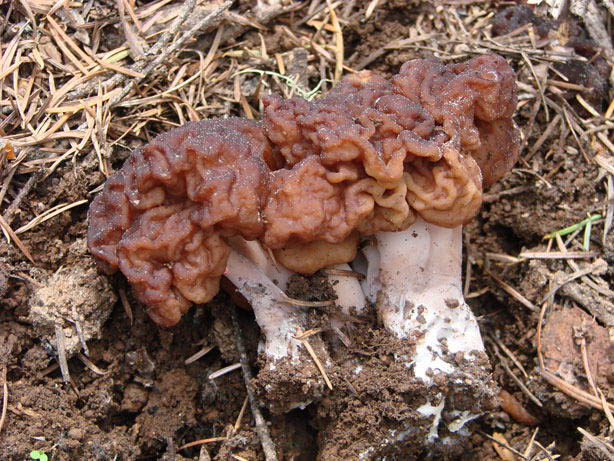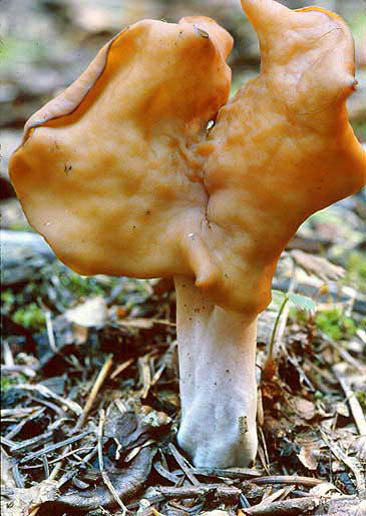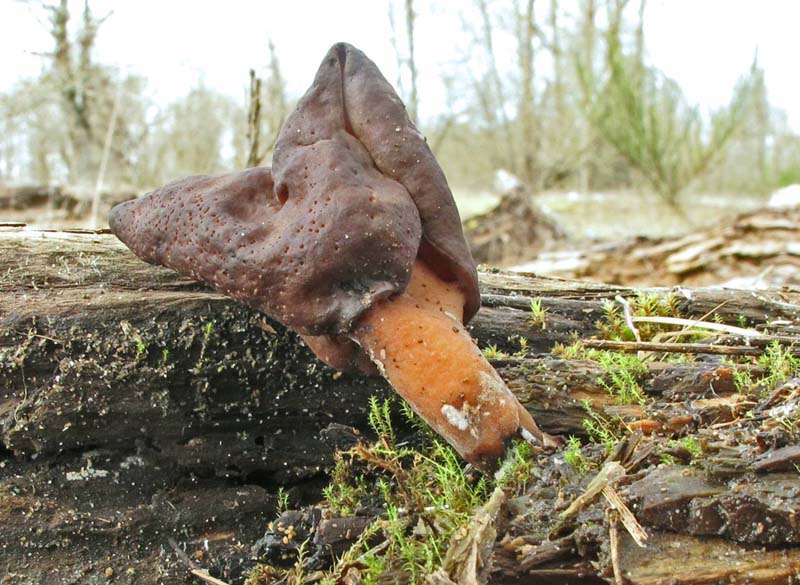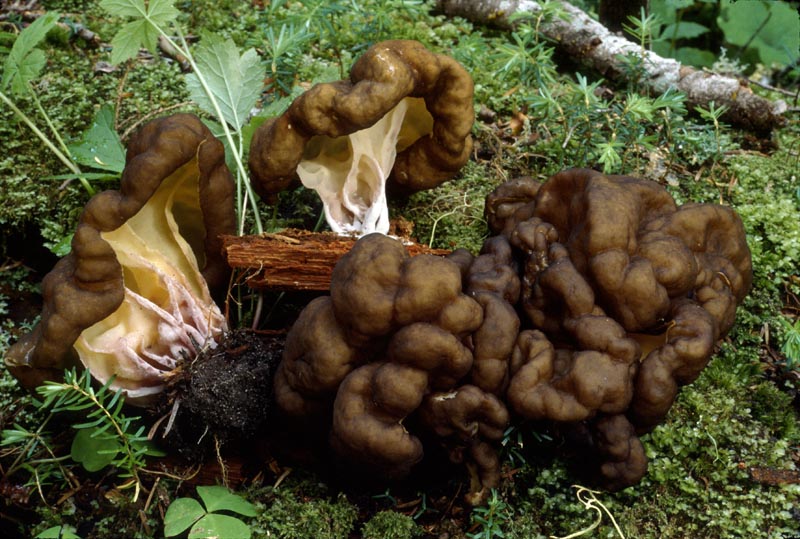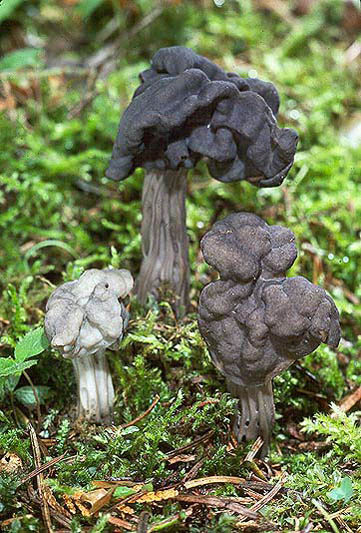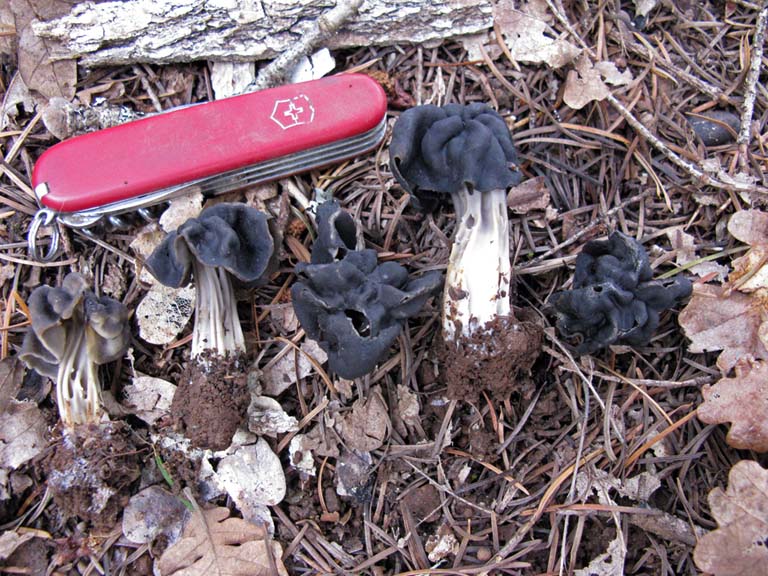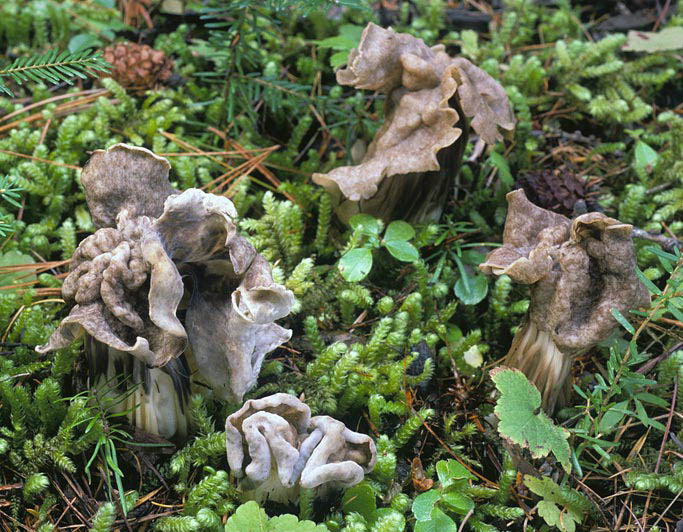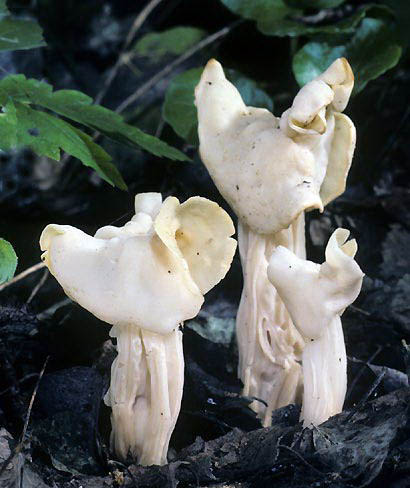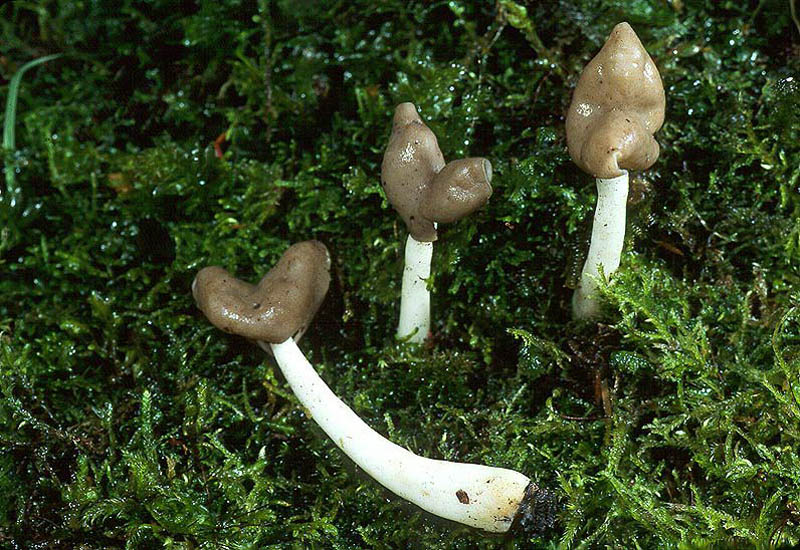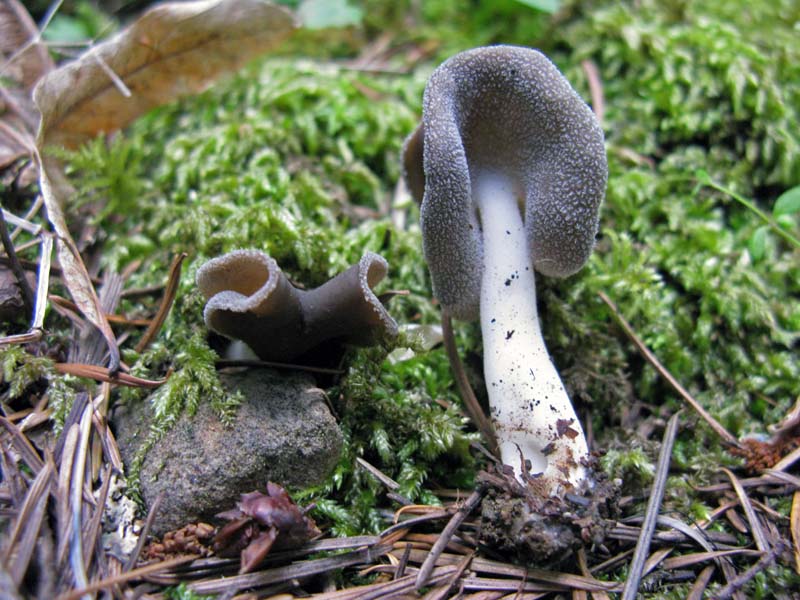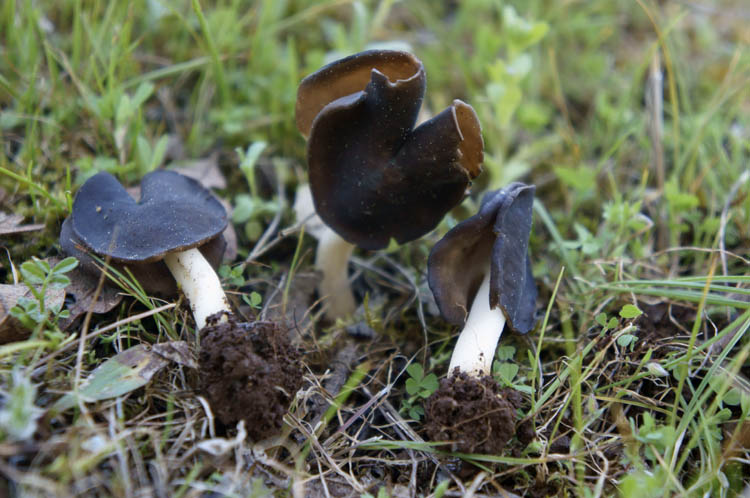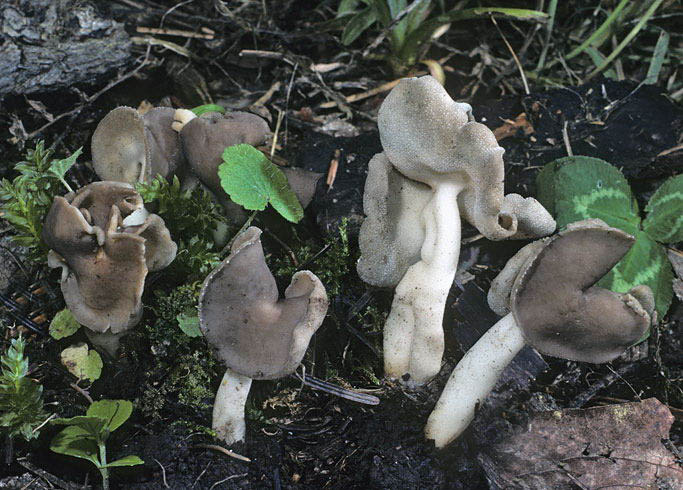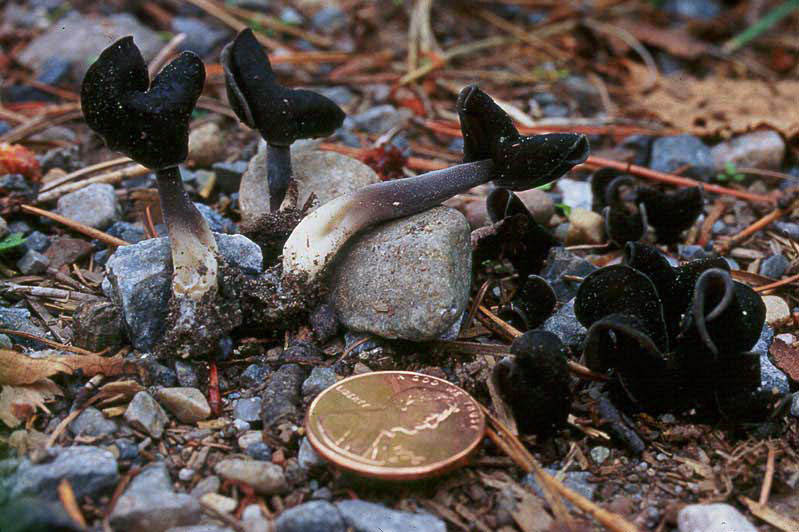M. importuna ('elata') - "landscape morel" - found in yards
the spring after the ground is disturbed, causing some people to
continually re-landscape their property. Often clustered. The least yummy morel?
'Mel-8' - very similar, usually growing singly. As
yet unnamed.
M. hotsonii - another landscape morel with more velvety ridges.
Found once in Redmond, WA.
M. rufobrunnea - southern OR "landscape"
morel, paler ridges, stains reddish brown.
Like M. tridentina it is pale like a yellow morel but with pits shaped like a black. It is neither, but belongs
to the basal clade, the ancestor of
all morels.
May fruit year round.
M. tomentosa - only shows up the first spring
after a forest fire above 3000'. Dark, hairy, rounded ridges
that lighten, grow bald and flatten in age, stem at first densely hairy
and often dark. Sometimes greyish. Late spring through summer.
M. exuberans (capitata)/sextelata/eximia (anthracophila/carbonaria/septimelata) -
other burn
morels, may have pink or greenish tints in the pits. All early spring.
M. exuberans is more likely to have a chambered instead of hollow stem.
M. snyderi - most common black morel outside of
recent burns (and to complicate matters, sometimes in landscaped
areas). Pale colours when young. Stem often with ribs and holes,
even when young. May grow in clusters.
Early spring.
M. brunnea - less common "natural" black
outside of recents burns under hardwoods and conifers. Grows singly, more
slender and
more brittle stem than M. snyderi, with deeper ant runway. Early
spring.
M. norvegiensis (eohespera) - similar single fruiter under Englemann spruce, late spring.
M. tridentina (frustrata) - "black" morel that
looks yellow (thus frustrating), but the pits are elongated
and vertically arranged. Has an ant runway (subtle here).
Late spring.
May cluster.
M. americana ('esculenta'/esculentoides/californica) - A yellow
(blond) morel. No ant runway. Pits and cap more round than
elongated and haphazardly arranged.
Found under cottonwood.
M. prava - Our blond morel with irregular,
contorted pits. Hosts unknown.
M. populiphila (semilibera grp) - the "half
free" morel, cap only attached to the stem in the top half.
Favours cottonwood. One of the black morels.
G. montana (gigas) - stem is almost as
wide as cap. Brain. Up to 20cm across.
G. esculenta - latin for tasty, which is true, but
it's DEADLY. Thinner stem.
G. infula - saddle shape with a cleft. DEADLY.
Unusual for appearing in the fall. Resembles
Helvella but
stockier.
G. ambigua - sometimes darker than G.
infula with violet tones. Deadly. Fall.
G. (Pseudorhizina) californica - fluted stem often with pink
blotches, folded cap.
H. vespertina ('lacunosa') - black convoluted cap,
grey lacunose (fluted) stem. Margin attached to
stem, smooth under cap. <30cm high, usually <8cm.
Fall (sometimes spring) with conifers.
H. dryophila - prefers oak, fruit trees and madrone, may have higher
contrast black and white, <8cm tall (shorter stem). Fruits winter
and spring. Another undescribed species may exist.
H. lactea - albino version, cap fused to
stem, smooth underneath.
H. maculata - brown cap, fluted stem, cap
edge not attached to stem, powdery underneath cap.
<15cm tall. Fall.
H.
crispa - like an albino H. maculata (cap not fused,
powdery underneath).
H. elastica - saddle cap at obtuse angle (wide 'v'),
brown, round stem, smooth and white under cap. Cap edge always
rolls into stem. <4cm across <10cm high.
Spring and fall.
H. compressa - saddle cap at acute angle (narrow 'v'),
brown, round stem but powdery and off-white under cap.
Young cap edge rolls away from stem. More solid stipe. Similar size. Spring and
fall.
H. albella - darker (but not pitch black) and perhaps smaller than H.
compressa. Less powdery under cap? Fall.
H. latispora (stevensii) - paler and smaller
than H. compressa. <2cm across, <5cm high. Summer.
H. atra - black saddle and stem apex. <2.5cm wide, <8cm
tall. Fall.
H. pezizoides - more irregular cap, darker stem and a more
pubescent underside.
There totally would be a morel colour photo book out there
except we only just realized there are more than two morels.
